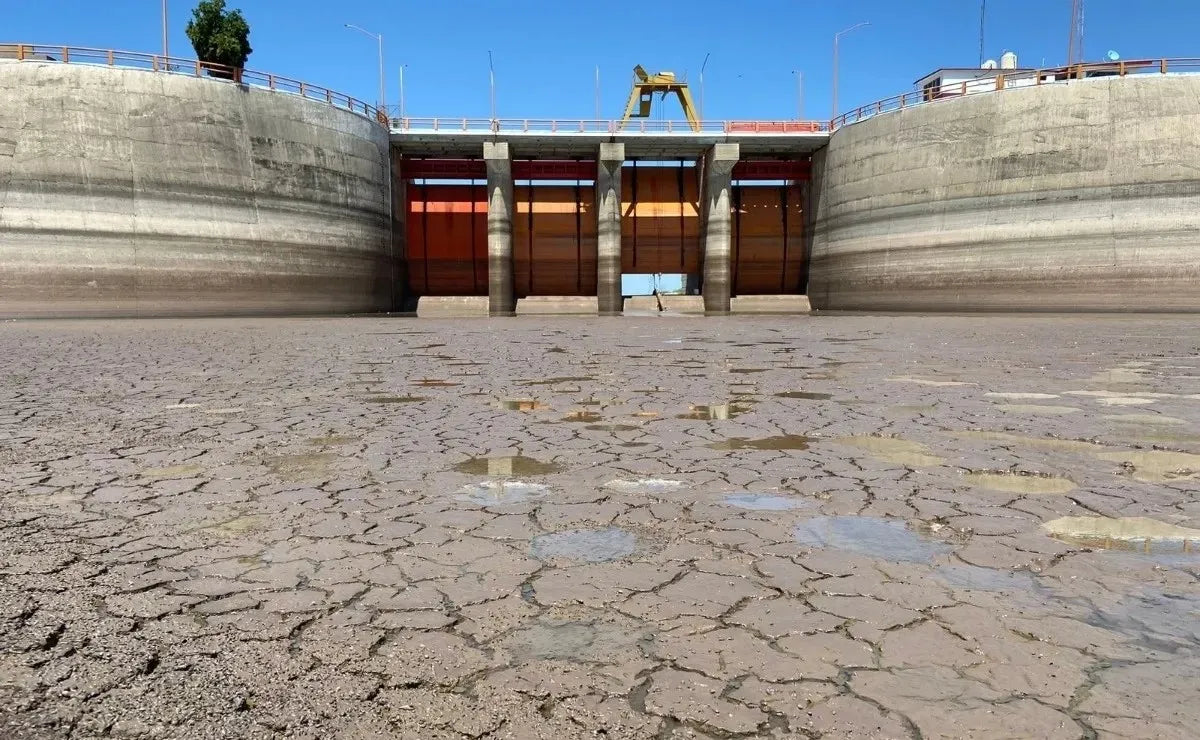Sinaloa, known for its rich agricultural and fishing traditions, is facing a water crisis that threatens both its communities and economy. The prolonged drought, exacerbated by climate change, has led to an alarming scenario in various regions of the state, where water scarcity has become a daily reality.
The Shortage in El Colorado: An Urgent Challenge
In the fishing village of El Colorado, the lack of water has forced the Municipal Government of Los Mochis to rely on water trucks to supply the population. Mayor Gerardo Octavio Vargas Landeros has led efforts to ensure that families receive the vital resource, despite complications caused by the lack of water in the canals that feed the water treatment plant.
"Without water, we can't purify it, but we are doing everything possible to serve the public," emphasized the mayor, highlighting the importance of using all necessary water trucks to mitigate this issue. However, this measure is only a temporary fix and does not address the root cause of the problem.
Guasave: Savings and Rationing, but Not Enough
In Guasave, despite recent rains, the situation remains critical. The Municipal Water and Sewerage Board of Guasave (Jumapag) has implemented water rationing to manage the supply, saving over 6 million cubic meters of drinking water. However, as manager Gilberto Leyva Cervantes noted, "It’s not enough."
Despite awareness campaigns and constant monitoring to prevent water waste, reservoir levels remain low, forcing the rationing to be extended for at least another 30 days. The most affected communities have seen changes in supply schedules, and some have been excluded from the rationing due to technical deficiencies in their distribution systems.
The Agricultural Sector at Risk
The drought has also severely impacted Sinaloa’s agricultural sector. In the northern region, the reservoir system has a deficit of 395 million cubic meters compared to last year, preventing the pre-allocation of water for autumn-winter crops. Blas Espinoza Quintero, head of Irrigation District 075, warned that farmers are now dependent on rainfall in September and October to restore reservoir levels.
Meanwhile, irrigation modules have begun implementing underground water pumping to sustain early crops, although not all have access to this option. Uncertainty is high, and many farmers must plan their crops with extreme caution, aware that water shortages could ruin their harvests.
An Innovative Solution
Amid this crisis, atmospheric water generation technology emerges as a viable and sustainable alternative to mitigate water scarcity in Sinaloa. This technology, which captures moisture from the air and converts it into drinking water, offers a solution independent of traditional sources like reservoirs and wells, which are increasingly depleted.
La Nube: Hope for a Sustainable Future
The implementation of technologies like La Nube could be a game-changer for this regions, where reliance on traditional water sources has shown its limits. Atmospheric water generation not only provides high-quality water but also reduces the strain on existing water resources, offering an ecological and long-term solution.
As Sinaloa faces one of its greatest water challenges, those who are part of the Club Nube no longer need to worry about it. It is essential to explore all possible alternatives to ensure water access for its communities. Technology, along with efficient management and a collective commitment to conservation and sustainability, could be the key to overcoming this crisis and building a more resilient future.
And you, what are you waiting for to join the Club Nube? Get yours here.












Yorum yazın
Tüm yorumlar yayınlanmadan önce incelenir.
Bu site hCaptcha ile korunuyor. Ayrıca bu site için hCaptcha Gizlilik Politikası ve Hizmet Şartları geçerlidir.